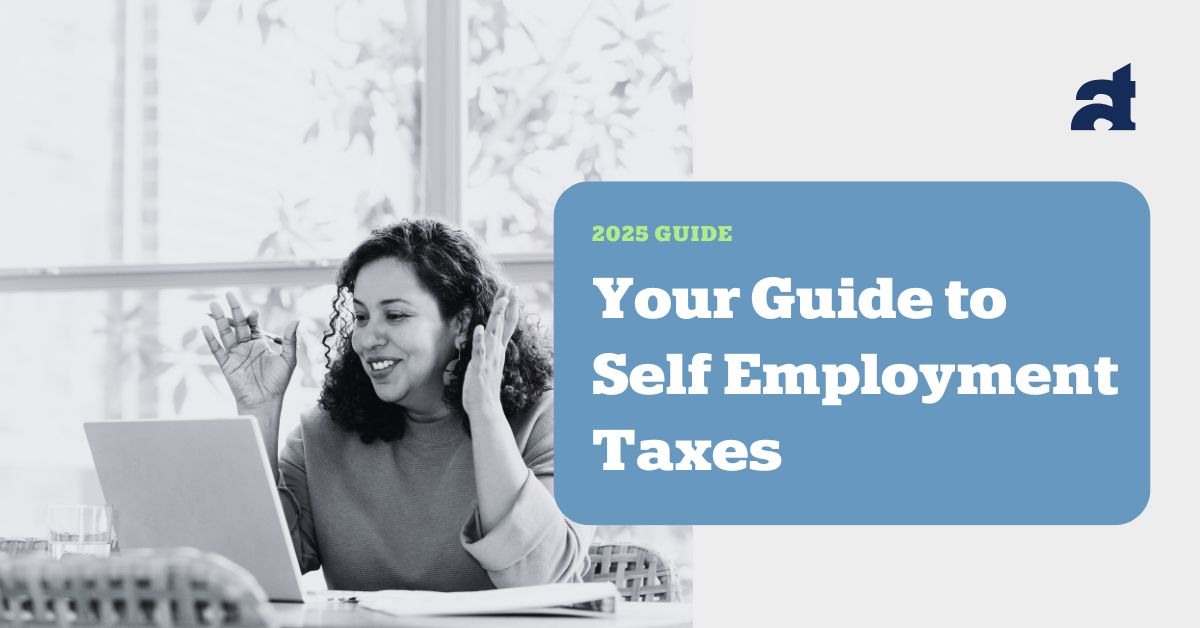
If you’re self-employed- running your own business, freelancing, doing contract work—you’ve probably heard the term “self-employment taxes.”
And if you’ve ever seen how much you owe in taxes, you’ve probably thought:
“Wait… why is this so high?”
You’re not imagining it. The tax system is a little different when you work for yourself.
And it all comes down to a little thing called self-employment tax.
Here’s how it works.
Let’s say you made $100,000 in your business last year. You already know you’ll pay income tax on that.
But on top of income tax, you also have to pay self-employment tax.
That’s because when you’re self-employed, the government sees you as both the employer and the employee.
Think about a regular job for a second. Your employer takes out:
And behind the scenes, your employer also pays the same amounts on your behalf.
But when you’re your own boss, you pay both sides—a total of 15.3% on your net business income.
So, if you made $100,000 in profit from your business, about $15,300 would go to self-employment tax.
Yes. Sorry.
You’ll also pay regular income tax on your business profit. The self-employment tax is completely separate.
It’s like:
A little relief: the Social Security part stops at a certain income level.
In 2025, it stops at $176,100. That means once your business income goes above that, you no longer owe the 12.4% Social Security tax on the extra.
But you still owe the 2.9% Medicare tax on everything, no matter how much you make.
And if you make over $200,000 ($250,000 if you’re married filing jointly), you pay an extra 0.9% Medicare tax on top of that.
Yes. You can deduct half of your self-employment tax when you file your taxes. It’s the government’s way of saying, “Hey, we know you’re covering both sides – here’s a little help.”
Example: If you paid $15,300 in self-employment tax, you can deduct about $7,650 as a business expense on your tax return. It won’t erase the tax, but it’ll lower your taxable income a bit.
If you’re self-employed, there are other tax perks you might not know about:
These are all “above-the-line” deductions, meaning they lower your adjusted gross income (AGI), which helps in all kinds of ways when it comes to taxes and qualifying for credits or deductions.
Yes… this is where an S corporation might come in.
Let’s say your business makes $120,000 in profit. If you’re a sole proprietor, you pay self-employment tax on all $120,000.
But if your business is an S corp, you can:
The salary is taxed with Social Security and Medicare. The distribution is not. That could save you thousands if it’s done correctly.
Important: You can’t just skip the salary or pay yourself $10k. The IRS is watching for abuse here, so this needs to be done by the book.
Want to see what kind of savings an S corp structure could offer you?
We built a free calculator to help you run the numbers. Just plug in a few details, and it’ll show you a side-by-side comparison of what you’d pay with and without an S corp structure.
It’s quick, simple, and could help you make a smart move for your business this year.
You didn’t start your business to become a part-time tax expert. But understanding this stuff – even at a high level – can save you a lot of money.
At Adam Traywick CPA, we help business owners in Fort Worth (and across the country) understand how these taxes work and what options you have.
Whether you want to:
We’re here to help.
Simply head over to our Contact page to book an introductory call.
Until next time!